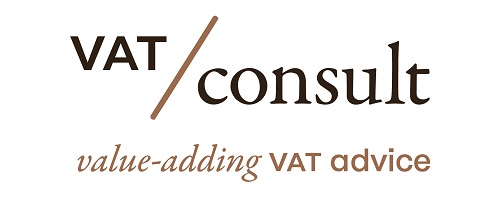On January 24, 2019, the ECJ issued its judgment in the case C-165/17 (Morgan Stanley).
Context: Reference for a preliminary ruling — Taxation — Value added tax (VAT) — Sixth Council Directive 77/388/EEC — Directive 2006/112/EC — Deduction of input tax — Goods and services used for both taxable transactions and exempt transactions (mixed-use goods and services) — Determination of the applicable deductible proportion — Branch established in a Member State other than that of its principal establishment — Expenditure incurred by the branch used exclusively for the transactions of the principal establishment — General costs of the branch used for both its transactions and those of the principal establishment
Summary
- Mixed-Use Expenditure Deduction: The Court ruled that for a branch in one Member State using expenditure exclusively for transactions of its principal establishment in another Member State, a deductible proportion must be applied based on the turnover from those transactions alone.
- Deductible Proportion Calculation: The numerator should include taxed transactions that would allow VAT deduction if conducted in the branch’s Member State, while the denominator includes the turnover from all relevant transactions.
- Single Taxable Person: The branch and principal establishment are considered a single taxable person unless the branch demonstrates independent economic activity, which is typically not the case.
- General Costs Deduction: For general costs used by both the branch and principal establishment, the deductible proportion must consider transactions from both entities, ensuring only transactions that would allow VAT deduction are included in the numerator.
- VAT Deduction Principles: The decision emphasizes that VAT deductions should relieve traders of VAT burdens, ensuring all economic activities are taxed neutrally and that input transactions must have a direct link to output transactions.
Facts & Background
- Entities Involved: Morgan Stanley & Co International plc, a company with a principal establishment in the United Kingdom, has a branch in Paris, France. The French tax authority is the opposing party.
- Activities and VAT Deduction: The Paris branch engaged in banking and financial transactions, opting to be liable for VAT on these transactions. It also incurred expenses for services provided to its UK principal establishment, deducting the VAT on these expenses.
- Tax Inspections and Adjustments: French tax authorities conducted inspections for periods between 2002 and 2009, finding that the branch’s deductions were not fully justified. They argued that VAT charged on goods and services used solely for transactions with the UK principal establishment was not deductible, and only a fraction could be deducted.
- Legal Dispute: Morgan Stanley contested the additional VAT assessments, with French courts initially ruling against it. The dispute centered on whether the Paris branch could deduct VAT based on transactions carried out by its UK principal establishment.
- Questions Referred: The French Conseil d’État sought clarification from the ECJ on how to calculate the deductible proportion for VAT in cases where a branch incurs expenses for transactions of its principal establishment in another Member State, and for mixed-use general costs shared between the branch and principal establishment.
Articles referred to in the VAT Directive
- Under Article 4(1) of the Sixth Directive, ‘taxable person’ means any person who independently carries out in any place any economic activity specified in Article 4(2) of that directive, whatever the purpose or results of that activity.
- Article 13 B(d) of that directive provided that the financial transactions mentioned in that provision are exempt from VAT.
- Article 13 C of that directive provided:
- ‘Member States may allow taxpayers a right of option for taxation in cases of:
- (b) the transactions covered in B(d) …
- ‘Member States may allow taxpayers a right of option for taxation in cases of:
- Article 13 C of that directive provided:
- Article 17(2), (3) and (5) of the Sixth Directive provided:
- 2. In so far as the goods and services are used for the purposes of his taxable transactions, the taxable person shall be entitled to deduct from the tax which he is liable to pay:
- (a) [VAT] due or paid in respect of goods or services supplied or to be supplied to him by another taxable person;
- 3. Member States shall also grant to every taxable person the right to a deduction or refund of the [VAT] referred to in paragraph 2 in so far as the goods and services are used for the purposes of:
- (a) transactions relating to the economic activities as referred to in Article 4(2) carried out in another country, which would be eligible for deduction of tax if they had occurred in the territory of the country;
- 2. In so far as the goods and services are used for the purposes of his taxable transactions, the taxable person shall be entitled to deduct from the tax which he is liable to pay:
- As regards goods and services to be used by a taxable person both for transactions covered by paragraphs 2 and 3, in respect of which [VAT] is deductible, and for transactions in respect of which [VAT] is not deductible, only such proportion of the [VAT] shall be deductible as is attributable to the former transactions.
- This proportion shall be determined, in accordance with Article 19, for all the transactions carried out by the taxable person.
- Article 19(1) of the Sixth Directive was worded as follows:
- The proportion deductible under the first subparagraph of Article 17(5) shall be made up of a fraction having:
- as numerator, the total amount, exclusive of [VAT], of turnover per year attributable to transactions in respect of which value added tax is deductible under Article 17(2) and (3);
- as denominator, the total amount, exclusive of [VAT], of turnover per year attributable to transactions included in the numerator and to transactions in respect of which value added tax is not deductible. The Member States may also include in the denominator the amount of subsidies, other than those specified in Article 11 A(1)(a).
- The proportion shall be determined on an annual basis, fixed as a percentage and rounded up to a figure not exceeding the next unit.
- The proportion deductible under the first subparagraph of Article 17(5) shall be made up of a fraction having:
Questions
(1) In circumstances where expenditure of a branch established in one Member State is exclusively used for the transactions of its principal establishment established in another Member State, must the provisions of Article 17(2), (3) and (5) and Article 19(1) of the Sixth Directive …, incorporated in Articles 168, 169 and 173 to 175 of Directive [2006/112], be interpreted to the effect that the Member State in which the branch is registered is to apply to that expenditure the branch’s deductible proportion, determined according to the transactions carried out in the Member State in which it is registered and according to the rules applicable in that State, or to apply the proportion applicable to the principal establishment, or to deduct a specific proportion combining the rules applicable in the Member States in which the branch and the principal establishment are registered, with regard in particular to a possible option mechanism for imposing VAT on transactions?
(2) What rules should be applied in the specific case where expenditure borne by the branch is used both for transactions in the Member State where it is registered and for transactions of the principal establishment, particularly as regards the concept of general costs and the proportion of tax deductible?’
AG Opinion
(1) In circumstances where expenditure of a branch of a taxable person, located in one Member State, is exclusively used for the transactions of the principal establishment of that taxable person, located in another Member State, the provisions of Article 17(2), (3) and (5) and Article 19(1) of Council Directive 77/388/EEC of 17 May 1977 on the harmonisation of the laws of the Member States relating to turnover taxes — Common system of value added tax: uniform basis of assessment, incorporated in Articles 168, 169 and 173 to 175 of Council Directive 2006/112/EC of 28 November 2006 on the common system of value added tax, must be interpreted as requiring the Member State in which the branch is registered to apply to that expenditure the branch’s deductible proportion, determined taking into account the output transactions carried out by the principal establishment with third parties, in accordance with the rules applicable in that Member State and in the Member State in which the taxable person’s principal establishment is located.
(2) The deductible proportion of the VAT charged on the expenditure borne by the branch of a taxable person, located in one Member State, which is used both for transactions of that branch in the Member State in which it is registered and for transactions of the principal establishment of that taxable person, located in another Member State, must be determined according to the same rules and procedures as for the expenditure incurred by that branch which is exclusively used for transactions of that principal establishment with third parties.
Decision
1. Article 17(2), (3) and (5) and Article 19(1) of Sixth Council Directive 77/388/EEC of 17 May 1977 on the harmonisation of the laws of the Member States relating to turnover taxes — Common system of value added tax: uniform basis of assessment, and Articles 168, 169 and 173 to 175 of Council Directive 2006/112/EC of 28 November 2006 on the common system of value added tax must be interpreted as meaning that, in relation to the expenditure borne by a branch registered in a Member State, which is used, exclusively, both for transactions subject to value added tax and for transactions exempt from that tax, carried out by the principal establishment of that branch established in another Member State, it is necessary to apply a deductible proportion resulting from a fraction the denominator of which is formed by the turnover, exclusive of value added tax, made up of those transactions alone and the numerator of which is formed by the taxed transactions in respect of which value added tax which would also be deductible if they had been carried out in the Member State in which that branch is registered, including where that right to deduct stems from the exercise of an option, effected by that branch, consisting in making the transactions carried out in that State subject to value added tax.
2. Article 17(2), (3) and (5) and Article 19(1) of Sixth Directive 77/388, and Articles 168, 169 and 173 to 175 of Directive 2006/112 must be interpreted as meaning that, in order to determine the deductible proportion applicable to the general costs of a branch registered in a Member State, which are used for both transactions of that branch in that State and transactions of the principal establishment of that branch established in another Member State, account must be taken, in the denominator of the fraction which makes up that deductible proportion, of the transactions carried out by both that branch and that principal establishment, it being specified that it is necessary that, in the numerator of that fraction, besides the taxed transactions carried out by that branch, solely the taxed transactions carried out by that principal establishment must appear, in respect of which value added tax would also be deductible if they had been carried out in the State in which the branch concerned is registered.
Source
Implications
- The CJEU is clear that a branch which supports its head office can recover associated VAT costs, subject to partial exemption considerations. Where those costs have a direct link to the head office’s taxable supplies a straightforward recovery right exists to the extent these supplies would be taxable if in the VAT scope of the Member State where the branch is located (even though the branch-to-head office service is a not treated as a supply).
- For VAT on costs that cannot be allocated to a specific activity, the prorata system applies. The CJEU clarifies the approach to follow for the calculation of the prorata. In particular, the taxable transactions of the head office would give raise to a recovery right for the branch only if the transactions would also carry a recovery right in the branch’s location. For costs which support both the branch and the head office, the judgment would suggest that the head office’s entire turnover together with the one of the branch must be included in the recovery calculation. Depending on the respective turnover of the branch and the head office, this might create peculiar results.
- Although not commented on by the CJEU, VAT deduction considerations should be similarly addressed for branch-to- branch transactions.
- It is worth noting that the CJEU only refers to a turnover based prorata (the so called “general” prorata). The use of other allocation keys and special prorata, as is often the case in Luxembourg, should be carefully analysed and on a case by case basis.
- Questions remain where VAT groups are created or in case of a branch with a head office outside the European Union.
Newsletters
- BTW jurisprudentie in Dutch
- Loyens Loeff
- vat-consult.be
- PWC Avocats
- International Tax Plaza
- Meijburg
- vatbook.eu
- Join the Linkedin Group on ECJ/CJEU/General Court VAT Cases, click HERE
- VATupdate.com – Your FREE source of information on ECJ VAT Cases















